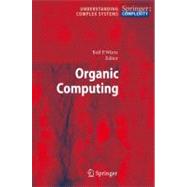
| Introduction: Organic Computing | p. 1 |
| The Organic Future of Information Technology | p. 7 |
| Systems Engineering for Organic Computing: The Challenge of Shared Design and Control between OC Systems and their Human Engineers | p. 25 |
| Controlled Emergence and Self-Organization | p. 81 |
| Organic Computing and Complex Dynamical Systems - Conceptual Foundations and Interdisciplinary Perspectives | p. 105 |
| Evolutionary Design of Emergent Behavior | p. 123 |
| Genesis of Organic Computing Systems: Coupling Evolution and Learning | p. 141 |
| Organically Grown Architectures: Creating Decentralized, Autonomous Systems by Embryomorphic Engineering | p. 167 |
| Artificial Development | p. 201 |
| Self-adaptive Worker-Helper Systems with Self-Organized Task Allocation | p. 221 |
| Concepts for Self-Adaptive and Self-Healing Networked Embedded Systems | p. 241 |
| An Artificial Hormone System for Self-Organizing Real-Time Task Allocation in Organic Middleware | p. 261 |
| Bio-Inspired Networking - Self-Organizing Networked Embedded Systems | p. 285 |
| Subspace Image Representation for Facial Expression Analysis and Face Recognition and its Relation to the Human Visual System | p. 303 |
| Self-organized Evaluation of Dynamic Hand Gestures for Sign Language Recognition | p. 321 |
| Index | p. 343 |
| Table of Contents provided by Ingram. All Rights Reserved. |
The New copy of this book will include any supplemental materials advertised. Please check the title of the book to determine if it should include any access cards, study guides, lab manuals, CDs, etc.
The Used, Rental and eBook copies of this book are not guaranteed to include any supplemental materials. Typically, only the book itself is included. This is true even if the title states it includes any access cards, study guides, lab manuals, CDs, etc.